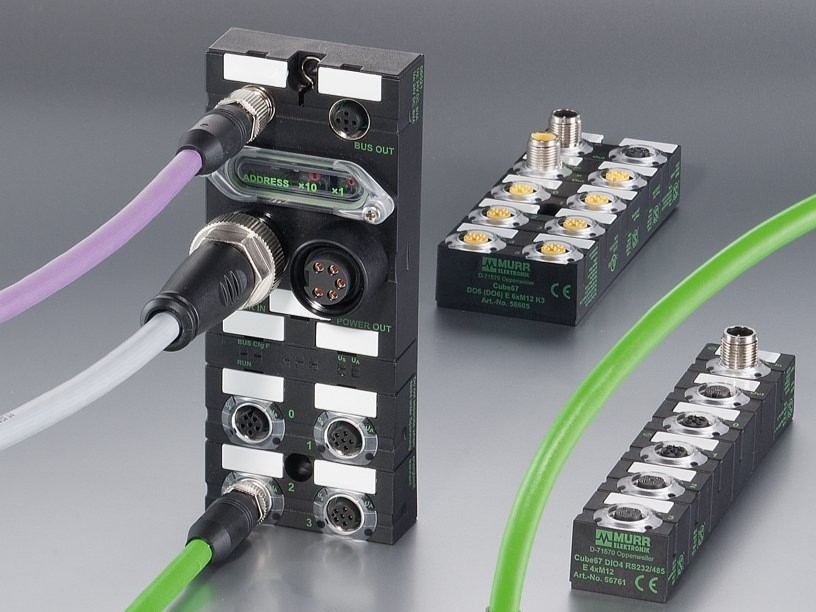Industry 4.0 promises to enhance efficiency, increase uptime and maximize productivity, so when most people think of smart manufacturing, they envision nimble robots and swift-moving automated equipment. However, Programmable Logic Controllers (PLCs) are really the stars of smart factory technology because they are the component that connects the machines, systems and devices and enables real-time data processing in Industry 4.0 environments.
This blog will explore the ways in which modern PLCs are at the forefront of the smart factory revolution.
What is a Smart Factory?
By definition, a smart factory is an automated manufacturing facility that uses connected devices to gather, share and analyze digitized data in real-time. This actionable data can be used to make decisions regarding production and predictive maintenance schedules, quality control and other strategies to enable holistic process optimization.
Smart factories rely on the use of Internet of Things (IoT) and Industry 4.0-enabled technologies to create an automated production environment that is more efficient, flexible and productive than facilities that are not bolstered by connected, digitized automation.
What are PLCs?
Traditionally, Programmable Logic Controllers, or PLCs, were essentially relays that were used to manage simple control tasks such as turning a motor on and off or opening and closing valves. In contrast, modern Programmable Logic Controllers, or PLCs, are highly sophisticated devices – essentially small industrial computers – that are used to collect and analyze machine and process information and then control or adjust automated production equipment based on that data in smart manufacturing environments.
The Role of PLCs in Industry 4.0 and Smart Factories
Since the introduction of IoT and Industry 4.0, modern PLCs, such as the MELSEC line from Mitsubishi, allow the seamless integration of data analysis and automated equipment. This means that PLCS can, in real-time, interact with a facility’s IoT-connected sensors, actuators and other devices to monitor the health and performance of critical production equipment, execute commands and adjust operations based on pre-programmed algorithms.
In this way, today’s PLCs are revolutionizing smart factories by enabling the following:
| Seamless integration | Modern PLCs serve as a bridge that seamlessly connects IoT-enabled devices, sensors and equipment and promotes data-driven decision making. |
| Process optimization | PLCs can gather data, such as machine metrics or process parameters, quickly analyze the data and make adjustments to operations or send alerts to operators and maintenance technicians when abnormalities are detected. This type of seamless integration enables real-time monitoring of the performance of production equipment and ensures that production is running optimally. |
| Predictive maintenance | In addition to monitoring production, integrated PLCs can be used to gather and analyze data from IoT-enabled sensors and devices regarding the health of critical pieces of equipment and trigger alerts or notifications when pre-programmed parameters go out of spec. This information can be used to make data-based decisions regarding preventive maintenance schedules so that issues can be resolved before failure occurs, reducing unplanned downtime and increasing uptime and productivity. |
| Enhanced productivity | Because PLCs can quickly process data from connected devices, plant personnel can make informed, data-based decisions in real time regarding production and maintenance schedules to improve the overall equipment effectiveness of the facility, thus increasing efficiency and productivity of the facility. |
| Enabling scalability and flexibility | Because today’s PLCs make simple the integration of IoT-enabled devices and systems, they enable smart manufacturing to be easily scaled up as the facility adds more sensors/devices, automated machinery or additional production capacity, creating a flexible and smart manufacturing environment. |
How to Select a PLC for Smart Factory Integration
Because choosing the best PLC for a manufacturing environment can be complex, engineering and programming teams must be involved. However, there are a few considerations that will help narrow down the choices.
Below are 5 factors to consider when choosing a PLC:
- Connectivity: Ensure that the system has the right number of input and output ports available and that they are the correct type for the selected PLC.
- Electrical requirements: Confirm that the chosen PLC is suitable for the facility’s existing electrical system voltage.
- Hardware compatibility: In order to connect seamlessly, the PLC must be compatible with the facility’s computer hardware and machinery.
- Memory: Ensure that there is enough memory to properly run the PLC. There should be sufficient RAM and ROM to complete processes.
- Environment: Because manufacturing facilities are often harsh environments, it is critical to make sure that the selected PLC can operate in any extreme conditions, such as high or low temperatures or washdown environments, that may be present.
PLCs, such as the modular MELSEC line from Mitsubishi, greatly simplify the process of networking, data handling and scaling Industry 4.0 and smart factory technologies, allowing connected control and monitoring of automated manufacturing solutions, as well as data-driven decision making. For more information on selecting the best PLC for optimizing your factory automation, contact the pros at HTE, a Tavoron company, today.


